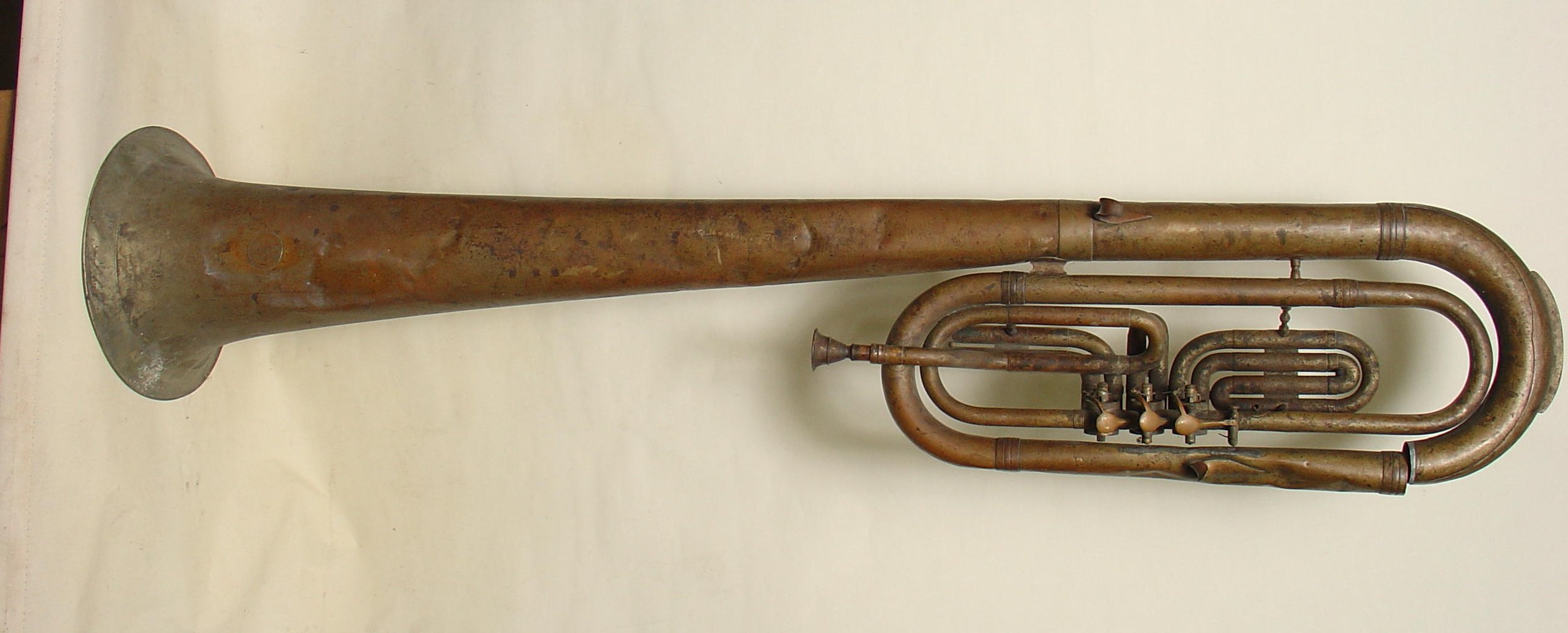Restoration of an Important American Tuba: Graves & Co. at E.G. Wright
The signature on this Eb tuba is extremely rare: "Made by Graves & Co. at E.G. Wright's Manufactory Boston". This was made during a time that principals of Graves & Co. were sharing quarters and presumably tooling and employees with E.G. Wright. We might guess that it was shortly after Graves & Co. closed the shop in Winchester, NH in 1849, but we have no evidence that either shop were making instruments such as this before 1855 and and my guess is that this was made closer to1860 when Wright was using a very similar round shield.
Graves at Wright tuba after restoration.
The design of this instrument is very much like tubas by Wright and a bit different from others known by Graves from the time. I suspect that the shop was a little crowded, but they must have gotten on well. Members of the Graves family shared a shop with E.G. Wright from 1856 through 1859 and again after 1862 and ultimately, in 1869 the two companies merged forming Boston Musical Instrument Manufactory.
It is thought that this tuba was built in the earlier period or even before, while Graves and Co. may have been struggling to get established in Boston. Interestingly, this tuba is the same basic design as known tubas by E.G. Wright made during the late 1850s through the 1860s and distinctly different than two existing tubas signed by Graves and Co. that were also believed to have been made during the 1850s.
Graves at Wright tuba before restoration.
Restoration of a large instrument in this condition is a very expensive job, but this very rare tuba was an easy call. It must have been played for many years, suffering damage and numerous repairs. Solid German silver instruments such as this are more prone to cracking than brass both from deterioration and damage. It had several ancient patches covering cracked tubing and even more splits needing patching.
You can see in the fifth photo to the right, that the bell had been cut short to remove a severely cracked section and attached with a crudely made ferrule. The arrows point to the original position of the large brace flange and that on the shortened bell. There is no practical way to re-attach a piece to the bell end, so I had to make a large ferrule which would look like the original and fit the bell stem and bell end.
Bell end showing how much it was shortened.
The balance of this job was straightforward, involving careful dent removal after disassembly and reassembling to look as it did originally. The valves are a bit worn, but good mechanical condition with all the original mechanism. The owner of this tuba, Mark Elrod, was rewarded with a good playing tuba of great historical significance.







